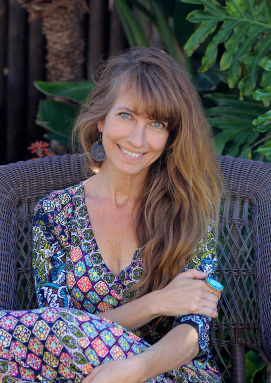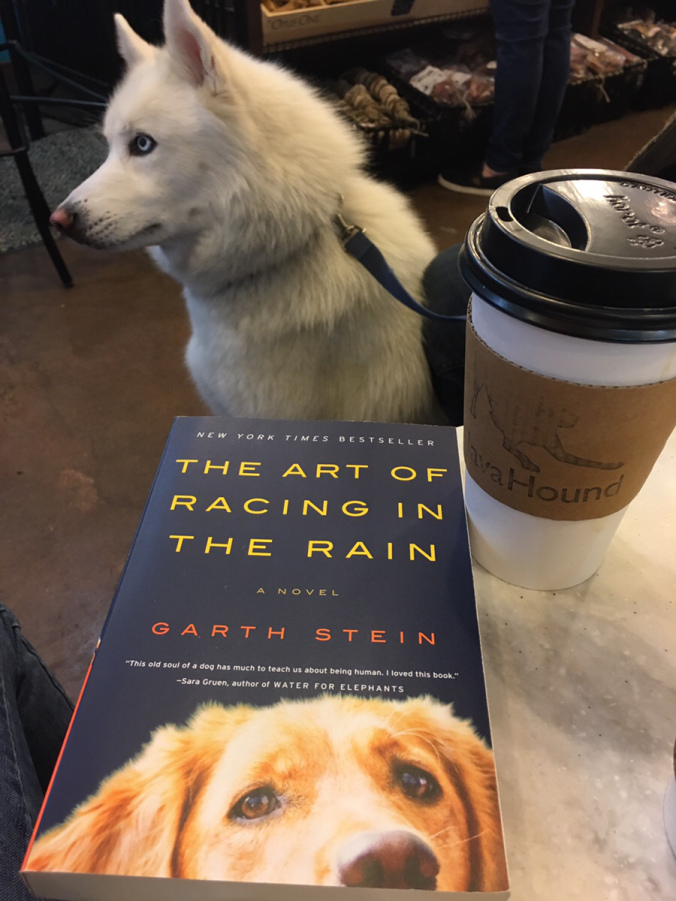By Leslie Lindsay
Lush, poetic, mysterious, with a touch of psychological suspense, T. Greenwood’s newest book, THE GOLDEN HOUR is like reading in a sun-dappled dream.
Greenwood’s prose is absolutely glimmering. Each character is richly drawn and the story itself, hauntingly beautiful.

In THE GOLDEN HOUR, T. Greenwood explores childhood trauma with present-day strife, each in equal balance, and each showing beauty and darkness. Wyn Davies is running from her past–when she was a teenager, she took a shortcut through a wooded path in her New Hampshire hometown, only to become a cautionary tale. Twenty years later, that horrific afternoon is rearing its ugly head. But now, she’s in the midst of a divorce, raising her 4-year old daughter, and struggling as an artist. And then, her friend suggests a Maine retreat. She can get away, paint and the past will just fall away. Or will it?
The Maine house has been empty for years. It’s nearly falling apart. Abandoned. Yet there’s something so eerily alive about the house. Wyn finds cannisters of old 35mm film yet-to-be-developed. What she finds is shocking, disturbing, and yet has the power to transform. She learns the mystery behind the old photos and determines, the past isn’t all that different from the present. 
I loved every minute of THE GOLDEN HOUR, the metaphor of life and art, and the concept that things don’t always have a happy ending, but in this case, they just might.
Join me, as I sit down with T. Greenwood and chat all things literary.
Leslie Lindsay: Tammy, it’s wonderful to have you back. I love all of your books and would relish reading your grocery list. And I loved THE GOLDEN HOUR. But, I understand writing this one was a bit of a challenge for you. Can you talk about your ‘Epitaphs and Prophecies’ where THE GOLDEN HOUR is concerned?
T. Greenwood: Writing this book was intensely challenging. First, I had a number of plot ideas I wanted to incorporate (hence the dual storyline), and each of them was fairly complex. But the greater challenge was how to depict Wyn’s character in a way that didn’t turn people away from her. We meet Wyn when she is going through multiple personal crises. Her marriage is falling apart, her career is not at all what she had once hoped it would be, and now a secret from her past is threatening to unravel everything. She’s angry. She’s frustrated. And she’s scared. She’s a difficult character to love initially. But she’s also broken, in a way that I hope readers will sympathize with. This book is all about ends and beginnings. And Wyn exemplifies that place that people often find themselves in, when everything seems in flux or on the verge of great change.
L.L.: Almost all of your books feature an artist; a material artist: a painter, a sculptor. But writing is an art, too. In fact, your website says, ‘Novelist. Photographer. Mama.’ Is it a conscious decision to make at least one of your characters an artist, or does it grow sort of organically?
T. Greenwood: I can’t help it. I love creative people, and I surround myself by them. I am fascinated by how art informs peoples’ lives, and so it is a recurring theme in my novels. This time around I really wanted to explore how three different artists’ relationship with their work diverged, as they became adults. Gus, Wyn, and Pilar all go to art school together. Gus continues to make art, supporting himself by working at a sign shop. Pilar finds sudden enormous success in the art world after many years of struggle. But Wyn is in a strange limbo – where she has “sold out,” in a sense, by painting on command. And while she is grateful to be making money making art, she can’t help but feel that she’s sold her soul. One of the themes I was interested in exploring in this novel was what happens when art and commerce intersect. And about the concept of art for art’s sake, what a luxury that is.
L.L.: In THE GOLDEN HOUR, you do a beautiful job of separating Wyn’s past from her current situation. I think this has a lot to do with structure. You have these dark, yet beautifully written short chapters entitled, ‘Inquiry’ thrusting the reader back in time. How did you determine this set-up?
 T. Greenwood: Wyn was the victim of a brutal crime when she was a child. I wanted to find a way to reveal that crime through the filter of her memory (an artist’s memory). I think artists often use their art to process tragedy, and so these chapters are her attempt to do so. They also give the reader small, palatable doses of that difficult aspect of the plot.
T. Greenwood: Wyn was the victim of a brutal crime when she was a child. I wanted to find a way to reveal that crime through the filter of her memory (an artist’s memory). I think artists often use their art to process tragedy, and so these chapters are her attempt to do so. They also give the reader small, palatable doses of that difficult aspect of the plot.
L.L.: And then there’s Maine. I could be entirely wrong, but is this the first time you’ve set a novel there? There’s something about Maine—the remoteness, the old-school vibe, the brooding sea. What was your inspiration for this setting?
T. Greenwood: My second novel is actually set in Maine as well. As a native Vermonter, I have spent quite a bit of time in Maine, mostly coastal Maine. And when I started writing this, my sister was living on Peaks Island. She would describe the winter to me, and I thought it was such a perfect backdrop for this story. It becomes a metaphor, in a way, for the isolation that Wyn feels. Her lies, like her art, have created a prison for her.
L.L.: Houses fascinate me. I’m always making up stories about old farmhouses slung alongside the road, dreaming of who might have lived there, and why they are gone. Was there a particular home that sparked your interest and you ‘gave’ it to Pilar and Wyn?
Greenwood: I kept envisioning a house in a Wyeth painting. When I was little, my parents had a print of “Christina’s World” hanging in our living room. That was the house I  initially thought of.
initially thought of.
L.L.: What is haunting you now? What has your interest?
T. Greenwood: I actually just finished a novel, which will be published by St. Martin’s Press in the Spring of 2018. It’s tentatively titled RUST AND STARDUST, and it is an imagined rendering of the true crime (the kidnapping of an eleven year old girl) in 1948 that inspired Nabokov’s LOLITA. And I just started writing a new book that will return to Vermont – I have two whole pages so far.
L.L.: Is there anything I forgot to ask, but should have?
T. Greenwood: I don’t think so.
L.L.: Tammy, it was a pleasure having you! Thank you so very much for taking the time to chat with us about THE GOLDEN HOUR.
T. Greenwood: Thank you so much for having me!
For more information, to connection via social media, or to purchase a copy of THE GOLDEN HOUR, please see:
- Twitter:@tgwood505
- Instagram: @tgwood505
- Website
 ABOUT THE AUTHOR: T. Greenwood is the author of eleven critically acclaimed novels. She has received numerous grants for her writing, including a National Endowment for the Arts Literature Fellowship and a grant from the Maryland State Arts Council. She lives with her family in San Diego, California, where she teaches creative writing, studies photography, and continues to write. Please visit her online at www.TGreenwood.com.
ABOUT THE AUTHOR: T. Greenwood is the author of eleven critically acclaimed novels. She has received numerous grants for her writing, including a National Endowment for the Arts Literature Fellowship and a grant from the Maryland State Arts Council. She lives with her family in San Diego, California, where she teaches creative writing, studies photography, and continues to write. Please visit her online at www.TGreenwood.com.
To connect with me, Leslie Lindsay, please see:
- GoodReads
- Facebook: LeslieLindsayWriter
- Twitter: @LeslieLindsay1

- Email:[email protected]
LOVE IT? SHARE IT!
[Cover and author image courtesy of V. Engstrand at Kensington Press and used with permission. Images of 35mm film, Andrew Wyeth’s “Christina’s World,” and Peak’s Island all retrieved from Wikipedia on 2/28/17]
Share this:





